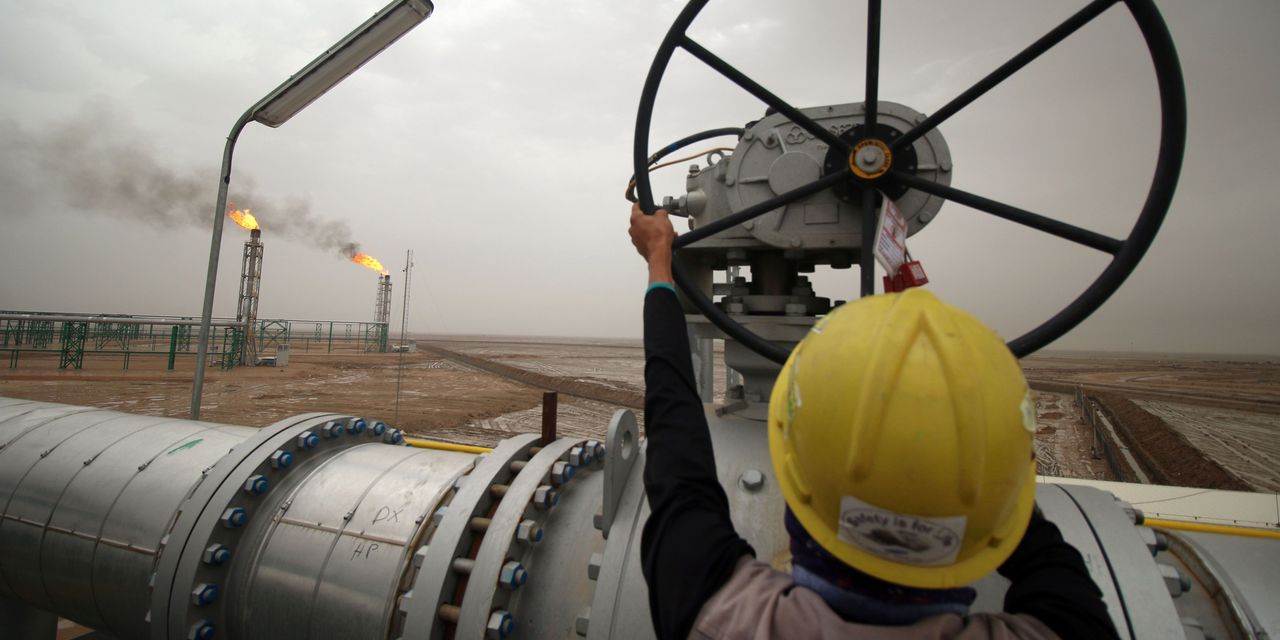Oil futures climbed Monday, with U.S. and global benchmark prices settling at their highest in a week after posting a third straight weekly decline on worries about the demand outlook.
Price action
-
West Texas Intermediate crude
CL00,
-0.06%
for December delivery
CLZ23,
-0.06% CL.1,
-0.06%
rose $1.09, or 1.4%, to settle at $78.26 a barrel on the New York Mercantile Exchange. -
January Brent crude
BRN00,
-0.12% BRNF24,
-0.12% ,
the global benchmark, climbed $1.09, or 1.3%, to $82.52 a barrel on ICE Futures Europe. Front-month Brent and WTI settled at their highest since Nov. 6, according to Dow Jones Market Data. -
December gasoline
RBZ23,
-0.59%
tacked on 2.1% to $2.24 a gallon, while December heating oil
HOZ23,
-0.17%
added 3.5% to $2.84 a gallon. -
Natural gas for December delivery
NGZ23,
-3.07%
settled at $3.20 per million British thermal units, up 5.4% after last week’s nearly 14% loss.
Market drivers
Signs of slowing demand in the U.S. and China offset the ongoing supply cuts from the Organization of the Petroleum Exporting Countries and its allies and the potential for supply disruptions in the Middle East “owing to the risk of spillover of the conflict in Gaza to other oil-rich nations,” said Fawad Razaqzada, market analyst at City Index and Forex.com
“But with oil prices correcting lower, much of the negative influences are likely to be priced in by now,” he wrote in market commentary.
Brent and WTI dropped more than 4% last week for their third consecutive weekly fall. Crude last week traded at levels last seen in mid-July after more than erasing the risk premium built into the market after the Oct. 7 Hamas attack on southern Israel. Crude bounced Friday, with support tied in part to remarks by Iraq.
Worries that the Israel-Hamas war could spark a broader regional conflict capable of disrupting the flow of crude from the Middle East have faded, although analysts warn that the potential for a sharp upside reaction to developments remains.
The spread between the implied volatility of similar call and put options on the ICE Brent crude price fell substantially last week, Edward Gardner, commodities economist at Capital Economics, observed in a Friday note.
“In fact, investors are putting a higher premium on downside risks to prices than upside,” he wrote (see chart below).
Meanwhile, the premium held by front-month oil contracts over second-month contracts has narrowed or been erased, signaling that investors are becoming less worried about supply, he noted.
On Monday, OPEC, in a monthly report, nudged its forecast for 2023 growth in oil demand higher to 2.5 million barrels a day, from a projection of 2.4 mbd in October.
Oil demand in 2024 is forecast to grow by 2.2 mbd, unchanged from OPEC’s previous assessment, it said. On the supply side, OPEC revised up its forecast for 2023 non-OPEC growth to 1.8 mbd from 1.7 mbd, while 2024 non-OPEC liquid supply is expected to grow 1.4 mbd, broadly unchanged from the October estimate.
Investors are looking ahead to a Nov. 26 meeting of ministers of OPEC+, a group that also includes Russia, which may limit further downside, Gardner said.
“Ultimately, though, we still forecast that the oil market will be finely balanced over the coming months, and there is a risk that OPEC+ decide to cut supply even further if prices were to fall by more,” he wrote, with Capital Economics sticking to its forecast for Brent ending this year and 2024 at $85 a barrel.
On Sunday, Hayan Abdel-Ghani, Iraq’s oil minister, said he expects to reach an agreement to resume oil production from the Kurdish region’s oil fields within three days, according to a report from Reuters.
That would mean a resumption of oil exports through the Iraq-Turkey pipeline, which will bring 450,000 barrels a day of crude oil back to the market, StoneX’s Kansas City energy team, led by Alex Hodes, said in a Monday note. Export flows through the pipeline had been offline since late March and contributed to “overall crude-oil tightness globally.”
“A return of flows should help alleviate crude tightness and is a bearish announcement at a time that crude-oil prices have been fading,” they said.
Read the full article here








